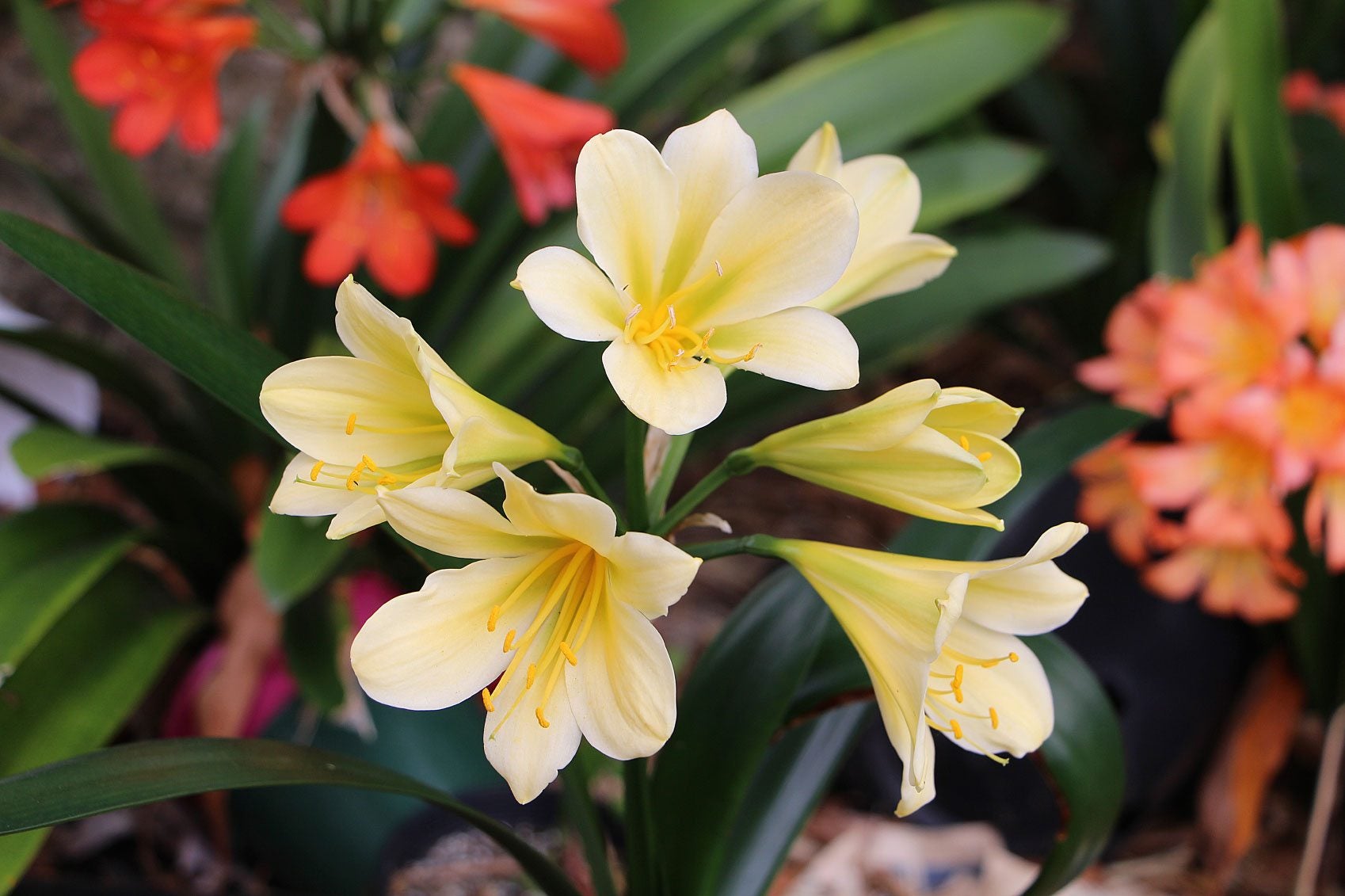Clivia Color Change: Reasons Why Clivia Plants Turn Color


Clivia plants are a collector's dream. They come in a wide range of colors, and some are even variegated. The plants can be very expensive, so many growers choose to start them from seed. Unfortunately, the plant needs to have five leaves before it blooms and that can take years. The seeds that bear the genetic material have a tendency to bear plants with gradually evolving color from the parent plant. There are also dominant colors which can change a strain's final outcome hue. Clivia plants turn color as they age too, with most deepening in tone as they mature.
Reasons for Changing Clivia Colors
Different flower color in Clivias from the same parent can happen because of genetic diversity, cross-pollination, or dominating color. Changing Clivia colors also happens when the plant is young and up until maturity. Even offsets from a parent may bloom with a slightly different shade than the parent. Such Clivia color change is part of the charm of the plants but is a frustration for true collectors.
Clivia Color Change from Seed
Color inheritance is fickle in Clivia. They follow the basic genetic cross rules with a seed getting DNA from each plant that contributed pollen. However, there are some traits that are not passed on, and others that are dominant and crowd out the expected trait. For instance, if a yellow crosses with an orange, its DNA will mingle. If the yellow had two yellow genes and the orange had two orange genes, the flower color will be orange. If you take this orange plant and cross it with two yellow genes, the flowers will be yellow because that orange had one yellow and one orange gene. Yellow wins.
Clivia Flower Colors in Young Plants
An offset is a genetic clone of the parent, so you should expect the same color flower. However, young offsets will have a slightly different tint and characteristics for the first year they flower. Seed planted Clivia have many variables that relate to color and even true seeds of the same species may take a few years to produce the same shade as the parent. Other factors that make Clivia plants turn color are environmental and cultural. They need indirect light and weekly watering in spring and summer. In fall and winter, gradually reduce water and move the plant to a cooler room of the house. Excess or dim light will inform bloom color, as will too much or too little water.
Tips for Clivia Flower Colors
Different flower color in Clivias is to be expected even in controlled growing situations. Nature is tricky and often sneaks in some surprises. You can tell the color of the plant from the stem color well before it begins to bloom. Purplish stems indicate a bronze or orange bloom, while green stems usually indicate yellows. Other pastel colors can be harder to pinpoint, as they may have a greenish stem or a darkly colored one. It depends upon the exact cross of the plant, and if you don't know that, you can expect changing Clivia colors. Unless you are growing to sell the plants, Clivia in any color is a satisfying winter blooming houseplant that will brighten up the dark gloom of the cold season.
Sign up for the Gardening Know How newsletter today and receive a free copy of our e-book "How to Grow Delicious Tomatoes".

Bonnie Grant is a professional landscaper with a Certification in Urban Gardening. She has been gardening and writing for 15 years. A former professional chef, she has a passion for edible landscaping.